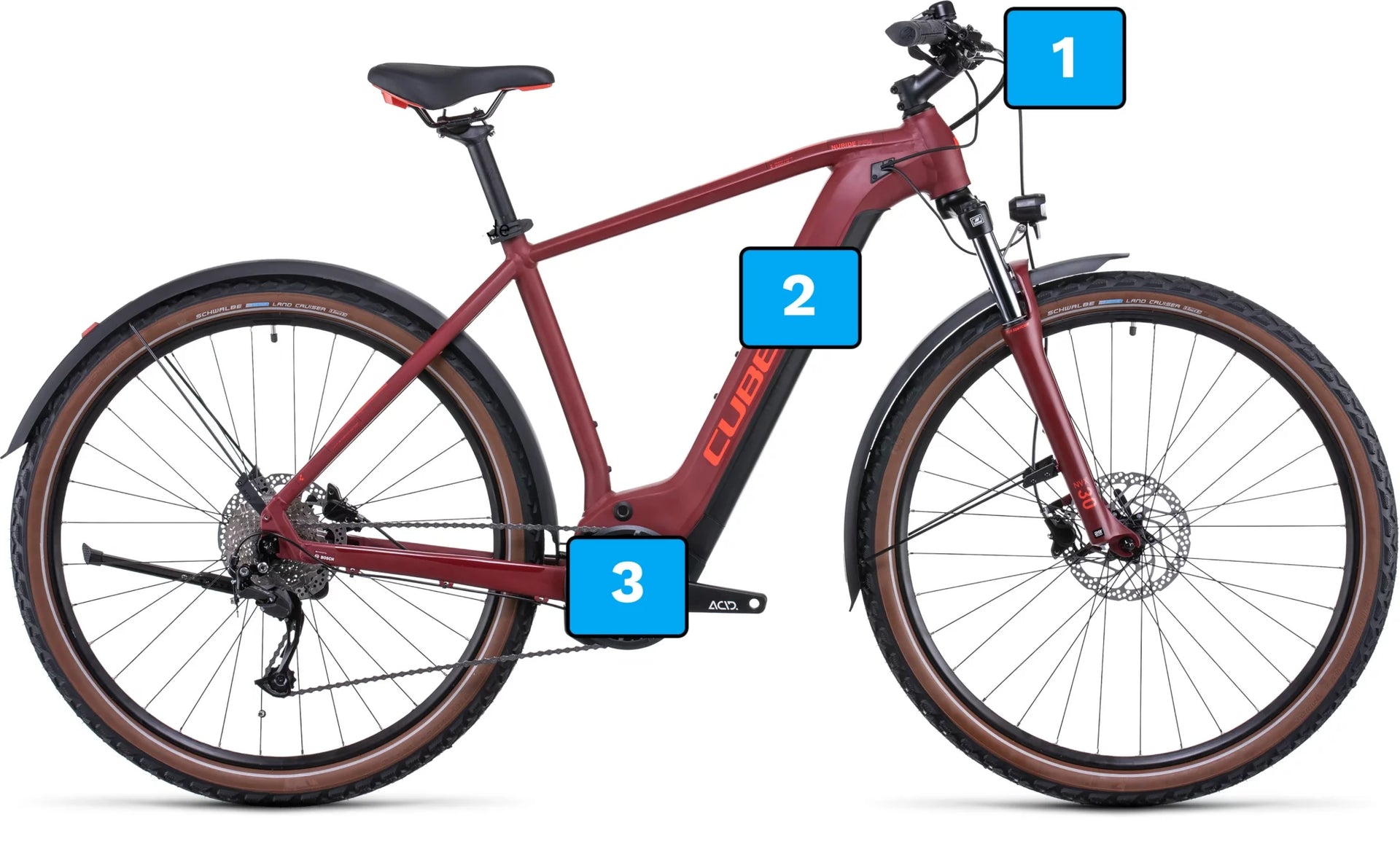
How does an electric bike work?
An electric bike, also known as an Ebike, is effectively a normal bike with a built-in electric motor but how does it work? The motor applies additional power on top of the pressure been applied to the pedals by the rider, consequently this makes it feel easier to ride, particularly on hills. Legal ebikes are pedal-assist only. Motor power is only applied when the bike is pedalled and can assist riders upto a maximum assisted speed of 15.5mph or 25km/h.
The fundamental components of an electric bike are a motor + sensors, a battery and a controller + head unit display. Here’s a breakdown of how these elements come together and make an electric bike what it is.
Ebikes.
#1 Controller + Head Unit Display
- The controller acts as the brain of the electric bike. It regulates the power delivered by the motor by the rider selecting a level of assistance. This typically ranges from no assistance to 300%+ spread over a number of ‘modes’.
- Different power levels (e.g., low, medium, high) are selected through a head unit display or remote control on the handlebars. By comparison, sometimes the display and remote control are physically separate on the bars.

#2 Battery
- The battery is a crucial component that stores energy and acts as the bike’s fuel tank. It has no bearing on performance or power only the range of assisted miles.
- Ebikes use Li-ion batteries for the purpose of their high energy density.
- The battery is usually integrated into the frame or mounted externally on the frame or rack dependent on the bike’s design. By the same token, modern ebikes tend to have batteries almost exclusively fitted in the frame.

#3 Motor + Sensors
- Electric bikes have a motors located in one of three locations. The front hub, rear hub or mid-drive in the crank or bottom bracket area of the frame.
- Mid-drive motors are the most efficient followed by rear hub motors. Front hub motors are the least efficient.
- The motor is responsible for providing additional power to assist the rider’s pedalling efforts.
- Ebikes are equipped with sensors that detect the rider’s pedalling speed (cadence), speed and torque (the force applied to the pedals).
- These sensors provide information to the controller, which then adjusts the pedal assistance accordingly. For example when riding uphill a rider will press harder on the pedals and apply more torque. The sensors will detect this and apply more power to the pedals as required.

In summary then, how does an electric bike work? When a rider pedals, the sensors detect their input and signal the controller to activate the motor, providing additional power. The level of assistance can be adjusted by the rider, and for that reason, the entire system is powered by a rechargeable battery. Electric bikes offer a sustainable and efficient alternative for commuting and recreational cycling, combining the benefits of traditional cycling with the convenience of electric assistance.
